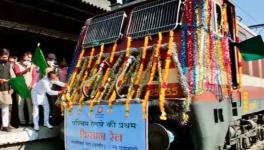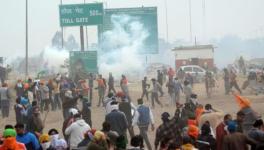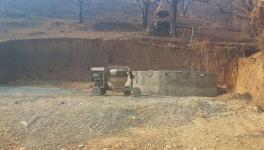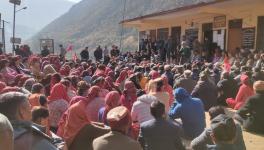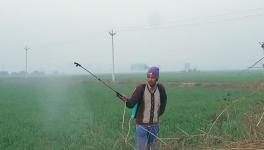The Delhi Smog Conundrum: Who is to be Blamed?
Image Courtesy: New Indian Express
This year’s smog in North India, especially in the National Capital Region (NCR), has created a buzz about how the three Chief Ministers of Delhi, Haryana and Punjab are passing the buck to one another for the declining air quality. While the stubble burning in paddy fields is being blamed for the smog in Delhi, one must not ignore the role played by the ever-rising pollution caused by the vehicles and construction activities in cities.
The present smog is because of the Particulate Matter (PM) – particles in the air. This particulate matter, classified as PM 10 and PM 2.5, comprises particles whose diameter is less than 10 micrometres and whose diameter is less than 2.5 micrometres, respectively. PM 10 is primarily due to road dust and construction activities. Even the smaller sized PM 2.5 is suspended in the air from vehicle emissions, industrial combustion processes and burning organic matter. The smog that engulfs North India at the onset of winter is primarily blamed on the stubble burning of the paddy waste by farmers. This is done mostly in the states of Punjab and Haryana in the month of October to sow the winter crop.
But if we look at the data available from the Central Pollution Control Board (CPCB), all the major cities in North India record pollution levels that are very high.
Speaking to Newsclick, D. Raghunandan of Delhi Science Forum said there are four main reasons for the pollution occurring in the city – vehicles, road dust, construction dust and bio-mass burning.
He said though there are seasonal variations, “we need to tackle the vehicular and dust pollution to tide over the problem.”
As for the farmers being blamed, he said it was not correct to place the onus of finding alternative means of stubble disposal on them, because their input costs have already risen and it is unjust to ask them to pay further for proper disposal of the paddy waste.
Nearly 9 million vehicles ply on the Delhi roads, he said, “why is no one asking the vehicle owners who are the major polluters in a city?”
To address the problem of stubble burning, Raghunandan said, “The government should come forward and foot the bill of transporting farm waste to the power generation companies to be used as raw material. Currently, with the price these companies receive per unit electricity generated, it is not economically viable for them to go out and seek farm waste.”
However, for a long-term solution to smog affecting our cities, he said the government should increase and incentivise public transport.
“Public transportation has to be encouraged by giving incentives and people with more than one car have to be taxed heavily. In Singapore, to discourage private vehicles they are now imposing a duty of 160%, while earlier the duty was for the second car,” he said.
So, rather than squarely blaming the farmers for the problem of urban smog, we must adopt the necessary technology to solve the problem. There was an action plan in place for addressing the air quality in Delhi and NCR. Had these preventive measures been adopted we could have prevented the health emergency we are nearing right now.
Get the latest reports & analysis with people's perspective on Protests, movements & deep analytical videos, discussions of the current affairs in your Telegram app. Subscribe to NewsClick's Telegram channel & get Real-Time updates on stories, as they get published on our website.











